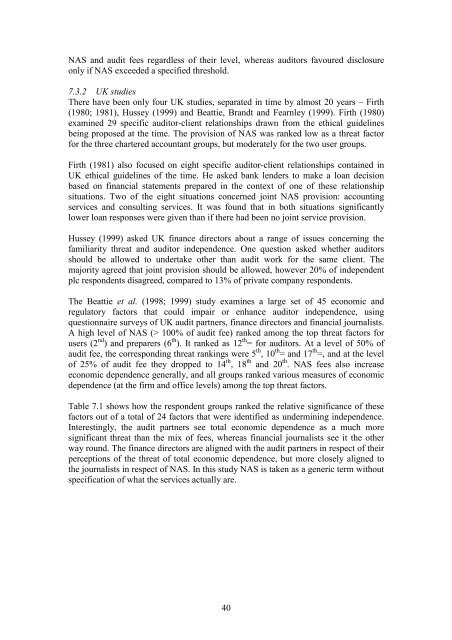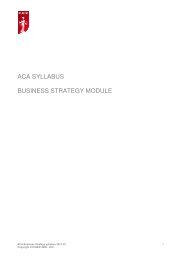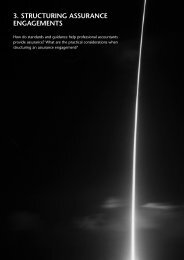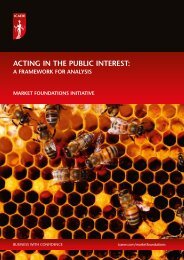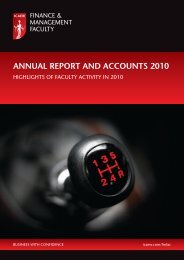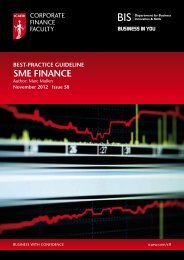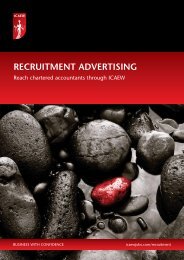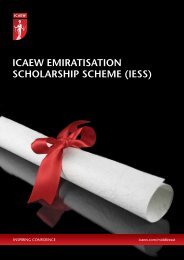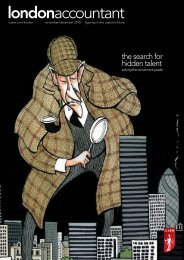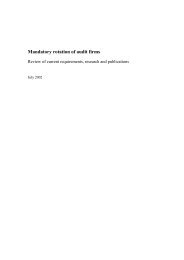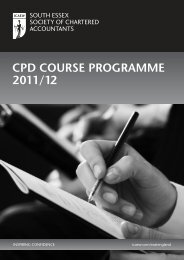Auditor independence and non-audit services - ICAEW
Auditor independence and non-audit services - ICAEW
Auditor independence and non-audit services - ICAEW
Create successful ePaper yourself
Turn your PDF publications into a flip-book with our unique Google optimized e-Paper software.
NAS <strong>and</strong> <strong>audit</strong> fees regardless of their level, whereas <strong>audit</strong>ors favoured disclosureonly if NAS exceeded a specified threshold.7.3.2 UK studiesThere have been only four UK studies, separated in time by almost 20 years – Firth(1980; 1981), Hussey (1999) <strong>and</strong> Beattie, Br<strong>and</strong>t <strong>and</strong> Fearnley (1999). Firth (1980)examined 29 specific <strong>audit</strong>or-client relationships drawn from the ethical guidelinesbeing proposed at the time. The provision of NAS was ranked low as a threat factorfor the three chartered accountant groups, but moderately for the two user groups.Firth (1981) also focused on eight specific <strong>audit</strong>or-client relationships contained inUK ethical guidelines of the time. He asked bank lenders to make a loan decisionbased on financial statements prepared in the context of one of these relationshipsituations. Two of the eight situations concerned joint NAS provision: accounting<strong>services</strong> <strong>and</strong> consulting <strong>services</strong>. It was found that in both situations significantlylower loan responses were given than if there had been no joint service provision.Hussey (1999) asked UK finance directors about a range of issues concerning thefamiliarity threat <strong>and</strong> <strong>audit</strong>or <strong>independence</strong>. One question asked whether <strong>audit</strong>orsshould be allowed to undertake other than <strong>audit</strong> work for the same client. Themajority agreed that joint provision should be allowed, however 20% of independentplc respondents disagreed, compared to 13% of private company respondents.The Beattie et al. (1998; 1999) study examines a large set of 45 economic <strong>and</strong>regulatory factors that could impair or enhance <strong>audit</strong>or <strong>independence</strong>, usingquestionnaire surveys of UK <strong>audit</strong> partners, finance directors <strong>and</strong> financial journalists.A high level of NAS (> 100% of <strong>audit</strong> fee) ranked among the top threat factors forusers (2 nd ) <strong>and</strong> preparers (6 th ). It ranked as 12 th = for <strong>audit</strong>ors. At a level of 50% of<strong>audit</strong> fee, the corresponding threat rankings were 5 th , 10 th = <strong>and</strong> 17 th =, <strong>and</strong> at the levelof 25% of <strong>audit</strong> fee they dropped to 14 th , 18 th <strong>and</strong> 20 th . NAS fees also increaseeconomic dependence generally, <strong>and</strong> all groups ranked various measures of economicdependence (at the firm <strong>and</strong> office levels) among the top threat factors.Table 7.1 shows how the respondent groups ranked the relative significance of thesefactors out of a total of 24 factors that were identified as undermining <strong>independence</strong>.Interestingly, the <strong>audit</strong> partners see total economic dependence as a much moresignificant threat than the mix of fees, whereas financial journalists see it the otherway round. The finance directors are aligned with the <strong>audit</strong> partners in respect of theirperceptions of the threat of total economic dependence, but more closely aligned tothe journalists in respect of NAS. In this study NAS is taken as a generic term withoutspecification of what the <strong>services</strong> actually are.40


